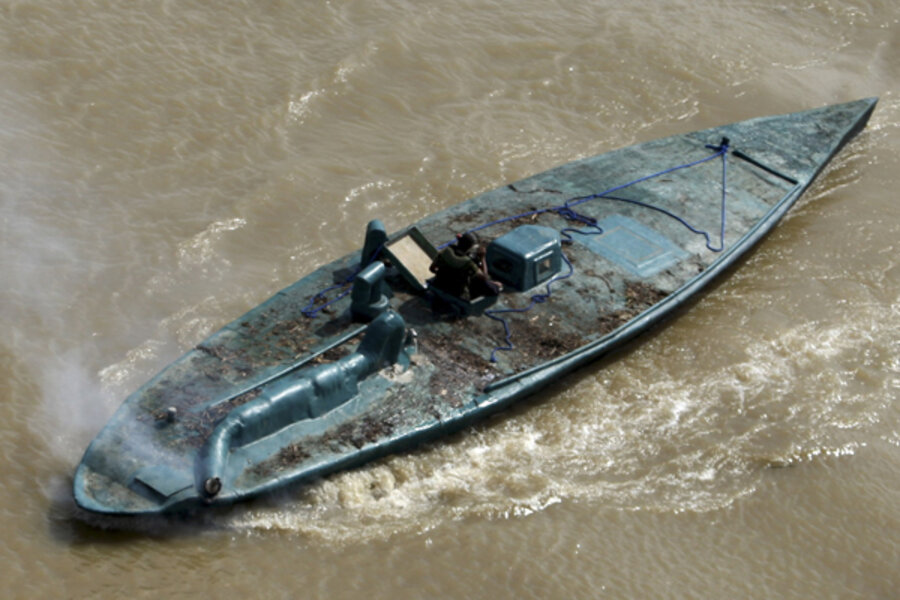Coast Guard siezes 'narco-sub' in Caribbean
Loading...
• A version of this post ran on the author's site, Insightcrime.com. The views expressed are the author's own.
As the US Coast Guard intercepts a drug-smuggling submarine in the Caribbean, the 30th such vessel intercepted since 2006, Southern Command has called for closer partnerships with authorities throughout the region.
A Miami-based aircrew spotted the suspicious semi-submersible vessel on March 30, and the Coast Guard dispatched two boats to intercept it. The crew of four sank the craft before they were apprehended.
The vessel was the fifth "narco-sub" seizure by the Coast Guard in the Caribbean and its 30th overall. Most of the illicit craft are seized in the Pacific.
The Coast Guard's website credited the Honduran Navy with being involved in the interception, which took place as part of a cooperation initiative called Operation Martillo.
Meanwhile, at this week's 2012 Central American Security Conference in El Salvador, US General Douglas Fraser, head of Southern Command, spoke of the need for closer regional ties to fight the drug trade through joint security initiatives like Martillo. He highlighted the importance of maritime routes to traffickers, saying that 80 percent of cocaine leaving South America goes by sea.
InSight Crime Analysis
Drug traffickers are increasingly relying on semi-submersibles and submarines to transport cocaine from South America to Central America and Mexico. The US Coast Guard first apprehended a semi submersible in 2006, but authorities have known of their existence since the mid-1990s. The vessels, generally constructed out of lightweight fiberglass in clandestine jungle shipyards, sit just below the surface of the water, making them difficult to spot. Fully-submersible drug trafficking vessels, which can travel long distances underwater, have also been discovered, the first in 2010 in Ecuador.
The State Department estimated in its 2010 International Narcotics Control Strategy Report that more than 60 vessels transport up to 300 metric tons of cocaine each year, meaning that only a small proportion are intercepted.
Under Operation Martillo, the US and countries in Latin America and Europe cooperate on operations against maritime drug trafficking in the Pacific and Caribbean waters around Central America, and the northern part of South America. This involves the sharing of equipment, skills and information. Since it was launched in January, forces operating under Martillo have seized 25 tons of cocaine and arrested 50 people.
– Insight – Organized Crime in the Americas provides research, analysis, and investigation of the criminal world throughout the region.
Get daily or weekly updates from CSMonitor.com delivered to your inbox. Sign up today.





